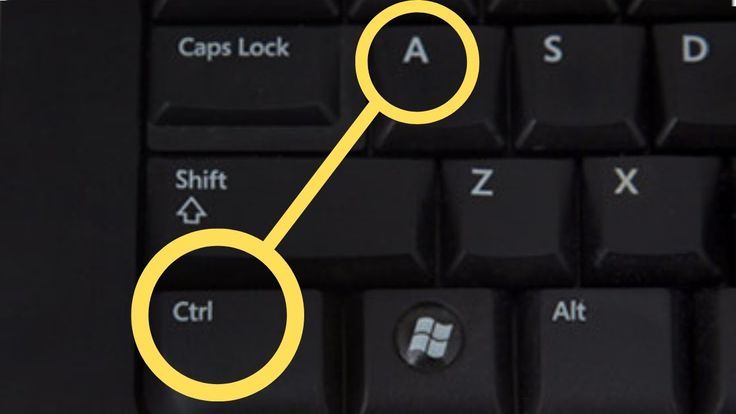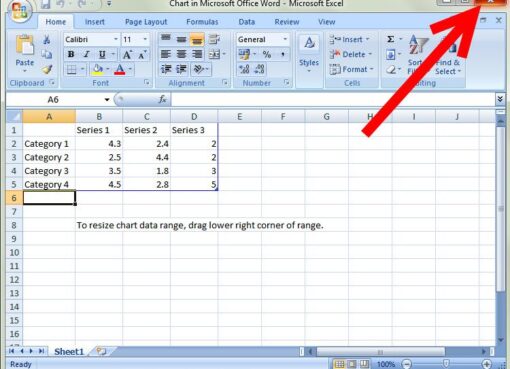Shortcut Keys ABCs:
Let’s start at the beginning, with the ABCs of shortcut keys. These combinations of keyboard strokes perform specific actions, eliminating the need for multiple mouse clicks or navigating through menus. They are like the quick keys to unlock various functions on your computer.
Keyboard shortcuts have been around for as long as personal computers have existed, and they continue to evolve as technology advances. The beauty of shortcuts is that they are not limited to a specific type of computer or operating system. Whether you’re using a Windows PC, a Mac, or even a Linux machine, there are shortcut keys available to make your life easier.
Basic PC Shortcut Keys:
For everyday tasks, basic PC shortcut keys are a game-changer. These shortcuts are the ones you’re likely already familiar with, such as Ctrl+C, Ctrl+V for copy and paste, and Ctrl+Z for undo. They are the fundamental building blocks of efficient computer usage.
Let’s break down some of the most essential basic PC shortcut keys:
- Ctrl+C: Copy selected text or objects.
- Ctrl+X: Cut selected text or objects.
- Ctrl+V: Paste copied or cut content.
- Ctrl+Z: Undo the previous action.
- Ctrl+S: Save the current document or file.
- Ctrl+P: Print the current document.
- Ctrl+A: Select all text or objects in the current document or window.
- Ctrl+F: Find text within a document or web page.
- Ctrl+H: Find and replace text within a document.
- Ctrl+N: Open a new document or window.
These shortcuts may seem simple, but they can save you precious seconds in your daily tasks. Whether you’re composing an email, editing a document, or browsing the web, having these shortcuts at your fingertips can significantly improve your efficiency.
PC Shortcut Keys for Special Characters:
Beyond basic text manipulation, there are times when you need to type special characters or symbols. Instead of searching through character maps or online resources, you can use keyboard shortcuts to quickly insert these characters.
Here are some common examples:
- Alt+0176: Inserts the degree symbol (°).
- Alt+0169: Inserts the copyright symbol (©).
- Alt+0153: Inserts the trademark symbol (™).
- Alt+0247: Inserts the division symbol (÷).
- Alt+0162: Inserts the cent symbol (¢).
Using Shortcuts:
Now that you understand the basics, let’s delve into how to use shortcuts effectively. Efficiency is about speed and precision. Learning to use shortcuts effectively involves practice and incorporating them into your workflow. The more you use them, the more natural they become.
Keyboard Shortcut Language:
One thing to note when learning keyboard shortcuts is the language of shortcuts. In many cases, shortcuts use a combination of keys, with the plus sign (+) indicating that you should press multiple keys simultaneously. For example, Ctrl+C means you should hold down the Control key (Ctrl) while pressing the C key.
Shortcut for Cut:
Let’s take a closer look at the “cut” action as an example. The keyboard shortcut for “cut” is Ctrl+X. This means that to cut a selected piece of text or an object, you should:
- Select the text or object you want to cut (usually by clicking and dragging or using the arrow keys).
- Hold down the Control key (Ctrl).
- While holding Ctrl, press the X key.
This combination of keys triggers the “cut” action, removing the selected content and placing it on the clipboard, ready to be pasted elsewhere.
Keys to Hope:
Keyboard shortcuts are often referred to as “keys to hope” for good reason. They provide hope for a more efficient and streamlined workflow, regardless of your computing tasks. Whether you’re working on a complex programming project, writing a novel, or simply managing your email, shortcuts can make a significant difference.
PC Shortcut Code:
Shortcuts can be thought of as a secret code that unlocks the full potential of your computer. As you become more proficient in using them, you’ll find yourself completing tasks more quickly and with greater precision. This efficiency not only saves time but also reduces the strain on your hands and wrists that can result from repetitive mouse movements and clicks.
Fast Key:
Another advantage of keyboard shortcuts is speed. With just a few key presses, you can execute actions that would otherwise require multiple mouse clicks and menu selections. This speed is particularly beneficial when working on time-sensitive tasks or projects with tight deadlines.
Mac Paste Special Shortcut:
While we’ve primarily discussed PC shortcuts so far, it’s important to note that Mac users also have access to a wide range of keyboard shortcuts. For instance, Mac users can use the Command key (⌘) in combination with other keys to perform actions.
One useful Mac keyboard shortcut is Command+Option+V, which is similar to the Ctrl+Shift+V shortcut on PCs. It allows you to paste text without any formatting, making it handy for cleaning up text copied from different sources.
Number Shortcut:
Keyboard shortcuts often involve numbers, providing a quick way to access items in lists or menus. For example, in many applications, pressing Alt+1 (or Alt+2, Alt+3, etc.) allows you to quickly switch between different tabs or sections.
Maximize Windows Mac Shortcut:
On a Mac, users can maximize a window to full screen by pressing the green button in the upper left corner of the window. However, there’s also a keyboard shortcut for this: Ctrl+Command+F. This shortcut is particularly useful when you want to make the most of your screen real estate for a specific application or task.
Keyboard Shortcut to Rename File:
Renaming files is a common task, and using a keyboard shortcut can make it quicker and more efficient. On a Windows PC, you can select a file in File Explorer and press F2 to enter rename mode. On a Mac, select a file and press Enter to rename it.
Ctrl + Alt + Del Mac Keyboard Windows 10:
The Ctrl + Alt + Del keyboard shortcut is well-known among Windows users as the key combination to access the Task Manager and perform various system-related tasks. While this specific shortcut is not native to macOS, Mac users can achieve similar functionality by pressing Command+Option+Escape. This key combination opens the “Force Quit Applications” window, allowing you to quit unresponsive applications.
Shortcut Keys Laptop:
Many laptops have specialized shortcut keys or function keys (F1, F2, F3, etc.) that can perform various actions when pressed in combination with the Fn (function) key. These laptop-specific shortcuts often control display brightness, volume, and multimedia playback. They can be incredibly convenient for adjusting settings on the fly.
Save Shortcut Keys:
The keyboard shortcut for saving files is another essential one to remember. On Windows, it’s Ctrl+S, and on a Mac, it’s Command+S. Pressing this shortcut regularly while working on a document or project ensures that you save your progress and avoid losing any chances in case of a sudden power outage or system crash.
Quick Key:
Quick keys, as the name suggests, are all about speed. They are designed to help you perform actions rapidly, without the need for extended mouse movements or navigating through menus. Quick keys are particularly valuable in situations where time is of the essence.
Internet Shortcuts:
Efficiency isn’t limited to tasks within your computer’s operating system or applications. It extends to your online activities as well. Internet shortcuts are a category of keyboard shortcuts specifically designed for web browsing. They allow you to navigate the web, interact with web pages, and manage your browser more efficiently.
Here are some common internet shortcuts that every web user should know:
- Ctrl+T: Open a new tab in your web browser. This is a great way to keep multiple web pages open simultaneously without cluttering your desktop.
- Ctrl+W: Close the current tab in your web browser. If you accidentally open a tab or no longer need a particular page, this shortcut saves you the trouble of manually clicking the close button.
- Ctrl+Tab: Switch between open tabs in your web browser. This is incredibly useful when you have several tabs open and want to move between them quickly.
- Ctrl+Shift+T: Reopen the last closed tab. If you accidentally close a tab and need to retrieve it, this shortcut is a lifesaver.
- Ctrl+L or F6: Highlight the URL in the address bar, making it easy to type in a new web address or search query without using the mouse.
These internet shortcuts work in most popular web browsers, including Google Chrome, Mozilla Firefox, Microsoft Edge, and Safari. By incorporating these shortcuts into your web browsing routine, you can navigate the internet more efficiently.
Using the Alt Key to Navigate Menus:
In addition to the shortcuts we’ve covered so far, there’s a whole world of keyboard shortcuts hidden within the menus of applications and operating systems. Many of these shortcuts are activated using the Alt key (or Option key on Mac). When you press the Alt key, the menus in your application’s menu bar typically display underlined letters, indicating which keys you can press to access specific menu items.
For example, consider the following scenario in a Windows application:
- Press Alt to activate the menu bar.
- Notice that the “File” menu is now highlighted, and the letter “F” in “File” is underlined.
- Press “F” to open the “File” menu.
- Within the “File” menu, you might see “Open,” and the letter “O” in “Open” is underlined.
- Press “O” to open a file.
This sequence of key presses allows you to access the “Open” function within the “File” menu without ever touching the mouse. The Alt key serves as your guide to navigating menus efficiently.
Similarly, on a Mac, you can use the Option key to access menu items with underlined letters. For example:
- Press the Option to activate the menu bar.
- Notice that the “File” menu is now highlighted, and the letter “F” in “File” is underlined.
- Press “F” to open the “File” menu.
- Within the “File” menu, you might see “Open,” and the letter “O” in “Open” is underlined.
- Press “O” to open a file.
This method of navigating menus using the Alt or Option key is a valuable skill to develop, as it allows you to quickly access various functions and features in your applications without the need for extensive clicking and scrolling.
Finding More Keyboard Shortcuts
As you become more proficient in using keyboard shortcuts, you may find that different software applications and operating systems have their own unique shortcuts. The vast world of keyboard shortcuts offers numerous possibilities for streamlining your workflow and increasing your productivity.
To discover additional keyboard shortcuts, consider the following resources:
- In-App Help: Many applications include a built-in help or documentation section that lists available keyboard shortcuts. Look for a “Keyboard Shortcuts” or “Hotkeys” section within the application’s help menu.
- Online Search: The internet is a treasure trove of information on keyboard shortcuts. A simple web search for “keyboard shortcuts for [your software or operating system]” can yield comprehensive lists and guides.
- Keyboard Shortcut Cheatsheets: Some users create and share cheatsheets or reference guides for specific software applications, providing a convenient way to learn and remember shortcuts.
- Built-In Shortcut Lists: Operating systems like Windows and macOS often provide built-in lists of keyboard shortcuts. For example, on Windows, you can access the “Keyboard Shortcuts” section in the Settings app.
- User Communities: Joining user forums or communities related to your software or operating system can be a valuable resource. Experienced users often share their favorite shortcuts and tips.
- Keyboard Shortcut Apps: Some applications and browser extensions offer keyboard shortcut functionality and tutorials to help users become more proficient.
By actively seeking out and learning new keyboard shortcuts, you can continue to refine your computing skills and work more efficiently across various applications and tasks.
The Power of Keyboard Shortcuts for Programmers
For programmers, keyboard shortcuts are especially crucial. They not only boost productivity but also enhance the coding experience. Whether you’re working in an integrated development environment (IDE) or a text editor, knowing the right shortcuts can make coding faster and more enjoyable.
Here are some keyboard shortcuts that are particularly valuable for programmers:
- Ctrl+S: Save your code. This shortcut ensures that your latest changes are safely stored, preventing potential data loss.
- Ctrl+Z and Ctrl+Y: Undo and redo actions. These shortcuts are essential for quickly reverting changes or restoring them.
- Ctrl+C and Ctrl+X: Copy and cut selected code or text. These shortcuts are handy for moving or duplicating code snippets.
- Ctrl+V: Paste copied code or text. This is essential for inserting code snippets or text from the clipboard.
- Ctrl+F: Find and replace text within your code. This shortcut helps you locate specific code elements and make global changes.
- Ctrl+D: Duplicate the current line or selection. This is useful for quickly replicating code.
- Ctrl+/ or Ctrl+Shift+/: Comment or uncomment selected code. These shortcuts are essential for adding comments or toggling comment status.
- Ctrl+Space: Trigger code suggestions or autocompletion. IDEs often provide intelligent code suggestions, speeding up coding.
- Ctrl+Shift+O: Open a file or resource by name. This is valuable when working with large codebases.
- Ctrl+Shift+F: Search for text in files. This shortcut allows you to perform a comprehensive search across your project files.
- Ctrl+Shift+G: Search for occurrences of a selected code element within your project. This is particularly useful for finding references to variables or functions.
- F12: Jump to the definition of a code element. This shortcut is handy for quickly navigating your codebase.
- Ctrl+Page Up and Ctrl+Page Down: Navigate between open tabs or documents. These shortcuts help you switch between different parts of your codebase.
- Alt+Enter: Access context-aware suggestions and fixes. IDEs often provide helpful suggestions for improving your code.
- Ctrl+Alt+L: Reformat code. This shortcut ensures consistent code formatting and readability.
Programming languages and development environments often have their own set of shortcuts and features. For example, if you’re working with Python in Visual Studio Code, you might discover specific shortcuts for running and debugging Python code.
As a programmer, investing time in learning and mastering keyboard shortcuts can significantly enhance your coding speed and accuracy. It allows you to focus more on the creative aspects of coding and less on repetitive tasks.
Save Time and Reduce Strain with Keyboard Shortcuts
In addition to boosting productivity, keyboard shortcuts offer ergonomic benefits. By reducing the need for extensive mouse movements and clicks, they can help prevent repetitive strain injuries (RSI) and alleviate discomfort associated with prolonged computer use.
When you rely on the mouse for every action, you may find yourself repeatedly reaching for it, clicking, and dragging. Over time, this can strain your wrist, fingers, and hand. Keyboard shortcuts provide an alternative, allowing you to keep your hands on the keyboard and minimize mouse use.
Moreover, for individuals who work with complex software or perform repetitive tasks, keyboard shortcuts can significantly reduce the risk of RSI and associated discomfort. By using shortcuts, you distribute the workload more evenly between your keyboard and mouse, which can alleviate strain.
Customizing Keyboard Shortcuts
Many software applications and operating systems allow users to customize or create their own keyboard shortcuts. This flexibility empowers you to tailor your computing experience to your specific needs and preferences.
For example, you might find that a particular function you frequently use in a software application doesn’t have an assigned keyboard shortcut. In such cases, you can often create a custom shortcut. Additionally, if you prefer using a different key combination for an existing shortcut, you can typically reassign it.
Mac vs. PC Shortcuts
While many keyboard shortcuts are similar between macOS (used on Mac computers) and Windows (used on PCs), there are key differences that users should be aware of. Here are some comparisons of common shortcuts between the two platforms:
- Copy: On Windows, it’s Ctrl+C; on Mac, it’s Command+C.
- Paste: On Windows, it’s Ctrl+V; on Mac, it’s Command+V.
- Cut: On Windows, it’s Ctrl+X; on Mac, it’s Command+X.
- Undo: On Windows, it’s Ctrl+Z; on Mac, it’s Command+Z.
- Save: On Windows, it’s Ctrl+S; on Mac, it’s Command+S.
- Print: On Windows, it’s Ctrl+P; on Mac, it’s Command+P.
- Select All: On Windows, it’s Ctrl+A; on Mac, it’s Command+A.
- Find: On Windows, it’s Ctrl+F; on Mac, it’s Command+F.
These are some of the most commonly used shortcuts, and you can see that the primary difference is the use of the Control (Ctrl) key on Windows and the Command (Cmd) key on Mac. Many other shortcuts are similar, but there are variations, especially in system-level functions. It’s important to be aware of these differences if you switch between platforms regularly.
Advanced Shortcuts for Power Users
While the basics are essential, advanced users often benefit from more specialized shortcuts. These shortcuts can vary widely depending on the software and tasks involved. Here are a few examples of advanced shortcuts that power users may find valuable:
1. Visual Studio Code (VS Code) Shortcuts for Programmers
- Ctrl+D (Windows) or Command+D (Mac): Select the next occurrence of the current word.
- Ctrl+Shift+K (Windows) or Command+Shift+K (Mac): Delete the current line.
- Ctrl+]/[ (Windows) or Command+]/[ (Mac): Indent or unindent selected lines.
- Ctrl+Shift+L (Windows) or Command+Shift+L (Mac): Select all occurrences of the current word.
- Ctrl+K, Ctrl+C (Windows) or Command+K, Command+C (Mac): Comment out the selected lines.
- Ctrl+K, Ctrl+U (Windows) or Command+K, Command+U (Mac): Uncomment the selected lines.
VS Code, a popular code editor, offers numerous shortcuts for navigating and editing code efficiently. Learning these shortcuts can significantly improve your coding speed and accuracy.
2. Adobe Photoshop Shortcuts for Designers
- V: Select the Move tool.
- B: Select the Brush tool.
- Ctrl+Alt+Z (Windows) or Command+Option+Z (Mac): Step backward in the history panel.
- Ctrl+Shift+Z (Windows) or Command+Shift+Z (Mac): Step forward in the history panel.
- Ctrl+T (Windows) or Command+T (Mac): Transform the selected layer.
- Alt+Backspace (Windows) or Option+Delete (Mac): Fill the selected layer with the foreground color.
- Ctrl+Alt+Shift+E (Windows) or Command+Option+Shift+E (Mac): Create a stamped copy of all visible layers.
- Ctrl+J (Windows) or Command+J (Mac): Duplicate the selected layer.
Adobe Photoshop, a powerful image editing software, offers a vast array of shortcuts for manipulating images and layers with precision.
3. Microsoft Excel Shortcuts for Data Analysts
- Ctrl+Arrow Keys (Windows) or Command+Arrow Keys (Mac): Navigate to the edge of data regions in a worksheet.
- Ctrl+Space (Windows) or Command+Space (Mac): Select the entire column of the active cell.
- Shift+Space (Windows) or Shift+Space (Mac): Select the entire row of the active cell.
- Ctrl+Shift++ (Windows) or Command++ (Mac): Insert a new row or column.
- Ctrl+- (Windows) or Command+- (Mac): Delete a row or column.
- Ctrl+D (Windows) or Command+D (Mac): Fill down (copy the content from the cell above).
- Ctrl+R (Windows) or Command+R (Mac): Fill right (copy the content from the cell to the left).
Microsoft Excel, a widely used spreadsheet application, offers a plethora of shortcuts for data manipulation and analysis. These shortcuts can significantly speed up tasks like data entry and formula creation.
4. Blender Shortcuts for 3D Artists
- A: Select or deselect all objects.
- G: Grab/move the selected object or vertex.
- R: Rotate the selected object or vertex.
- S: Scale the selected object or vertex.
- Shift+D: Duplicate the selected object or vertex.
- X, Y, or Z (during transformation): Constrain movement or rotation to a specific axis.
- Ctrl+Z (Windows) or Command+Z (Mac): Undo the last action.
- Ctrl+Shift+Z (Windows) or Command+Shift+Z (Mac): Redo the last undone action.
Blender, a powerful 3D modeling and animation software, relies heavily on keyboard shortcuts for efficient navigation and modeling. Learning these shortcuts is essential for 3D artists and animators.
FAQs
- What are keyboard shortcuts, and why should I use them?
Keyboard shortcuts are combinations of keys that allow you to perform tasks or actions on your computer quickly and efficiently. They eliminate the need for excessive mouse movements and clicking, saving time and reducing strain. Using keyboard shortcuts can significantly boost your productivity and streamline your workflow. - How can I learn and remember keyboard shortcuts?
Learning keyboard shortcuts is a gradual process. Start by focusing on a few essential shortcuts relevant to your daily tasks. Create a cheat sheet or reference guide to help you remember them. Practice regularly by incorporating shortcuts into your routine tasks. Over time, you’ll become more proficient and remember them naturally. - Are there differences between keyboard shortcuts on Windows and Mac computers?
Yes, there are differences in keyboard shortcuts between Windows and Mac operating systems. While many shortcuts are similar, the key difference is the use of the Control (Ctrl) key on Windows and the Command (Cmd) key on Mac. It’s essential to be aware of these variations if you switch between platforms. - Can I create custom keyboard shortcuts for specific tasks or applications?
Yes, many software applications and operating systems allow users to create custom keyboard shortcuts or remap existing ones. Check the settings or preferences of the software or your operating system to explore customization options. Custom shortcuts can be tailored to your specific needs. - How can keyboard shortcuts benefit my health and ergonomics?
Keyboard shortcuts offer ergonomic advantages by reducing the need for repetitive mouse movements and clicks. This minimizes strain on your wrists and hands, reducing the risk of repetitive strain injuries (RSIs). By incorporating shortcuts into your workflow, you can work more comfortably and efficiently.
- How to Turn Off Sticky Keys on Windows 10 - April 27, 2024
- What is a Hotmail? - April 26, 2024
- What is a Console? - April 25, 2024




